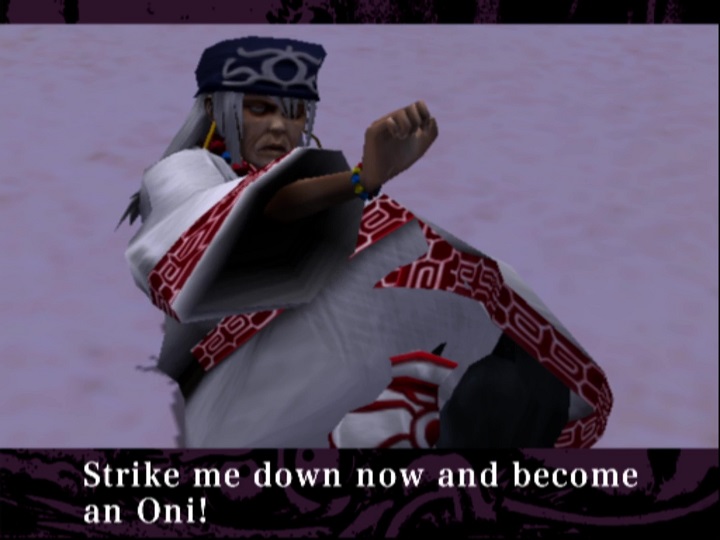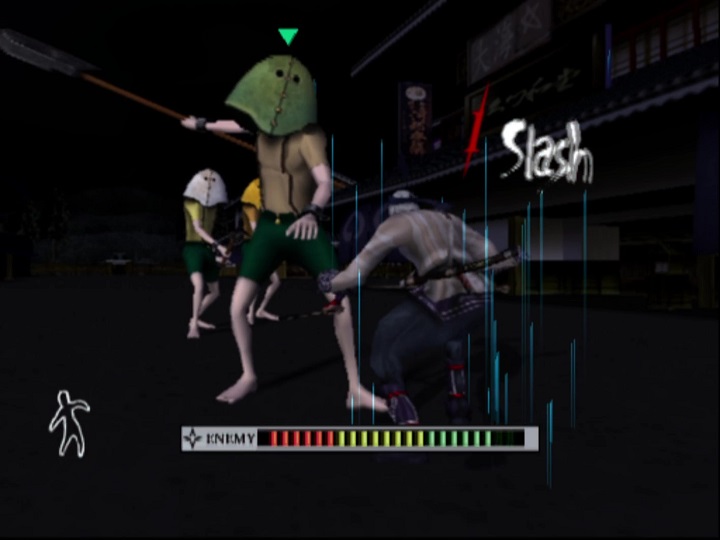The concept of “oni” in Sidetracked also mirrors death-filing and awakening of the Kamui/Ayame abilities, albeit here without the Shelter Kids background. Characters become an “oni” as well as, in the Japanese script, “kishin” after they undergo traumatic acts of violence. The “Kijin clan” that serve Lord Matsumae are also a group of oni. (Kishin and kijin are both terms for especially powerful oni.) Worso becomes an oni by killing his stepmother, Kunnenishi, the only scene in which he seems pained or sorrowful. After this, for most of the Jin and Mugen stories, he lurks in the castle town, assassinating so many people he becomes a notorious “serial killer.”

Furthermore, like the Kamui/Ayame personalities, an “oni” at least sometimes cannot be killed in an ordinary way. Tsubaki becomes an oni when he massacres his gang and his own daughter, which transforms him into a first Kamui-style “brute beyond human imagination,” a serial killer capable of dying repeatedly but resurrecting himself unscathed in the end boss fight of “Cruel and Inhumane: The Tale of Tails.” One of the kijin also identifies Antonioni as an oni after the boss fights in “Elusive.” Based on this man’s dialogue, Antonioni transformed into an oni because he was exiled from his homeland, another traumatic event triggering the change into a supernatural killer.

Becoming an oni enables Worso to defeat Tsubaki as well as the nine Kijin oni who serve Lord Matsumae in “Elusive,” not to mention kill hundreds of foot soldiers. However, killing Kunnenishi carries baggage that does not exist for Akira, Sakura, etc. in The Silver Case. Their trauma is unrelated to the change into the savior Kamui itself. Rather, it comes from the abuse they faced in the past. Confronting the past and the “facts” of their role in society empowers them with the ability to kill the darkness but it is not itself the source of the trauma. Once Nezu is killed, Akira and Kusabi are not haunted but triumphant, enlightened.